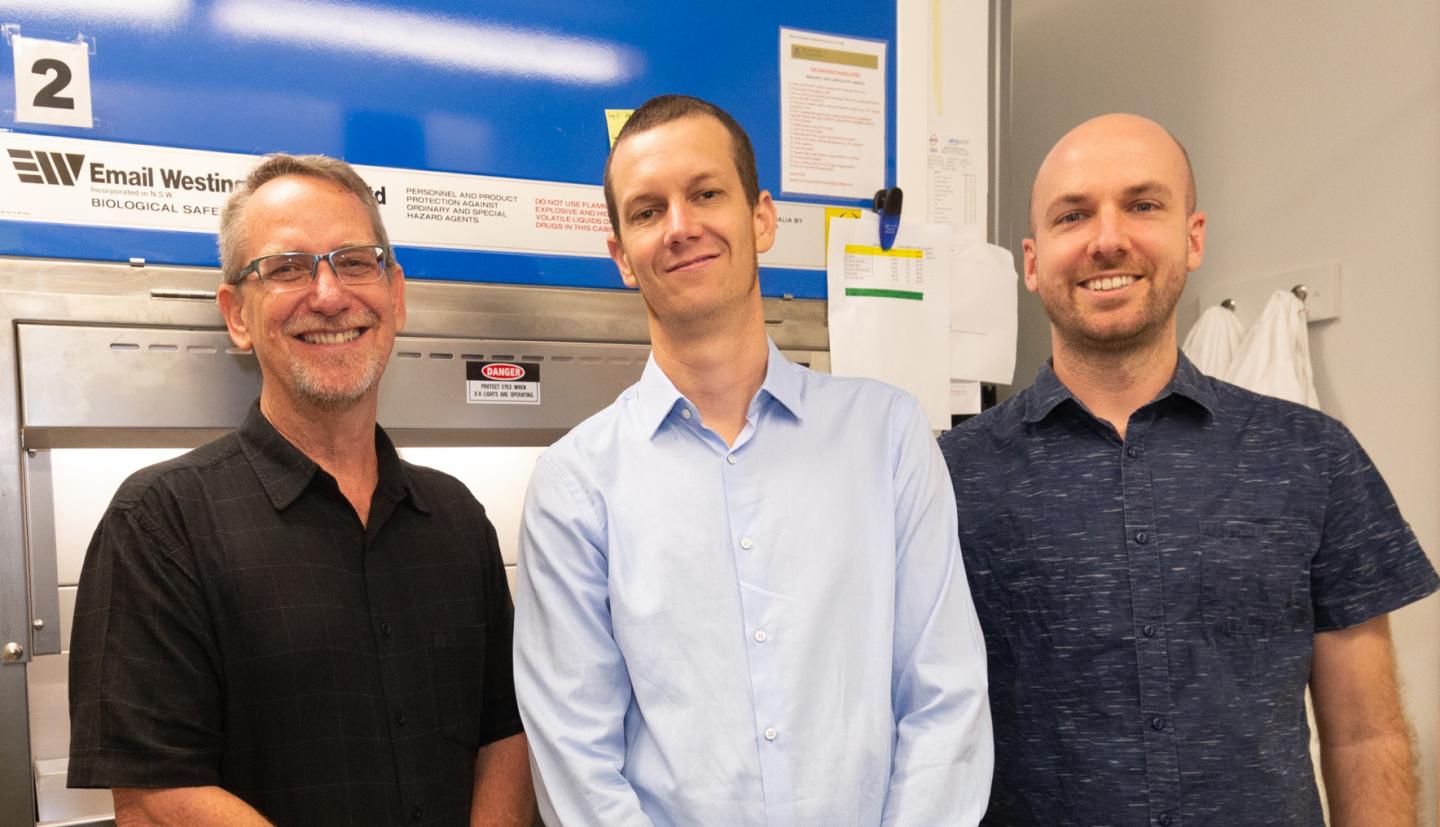
Credit: The University of Queensland
Vaccines to stop the world’s next epidemic could be developed in record time under a $14.7 million
partnership using technology developed at The University of Queensland.
The Coalition for Epidemic Preparedness Innovations (CEPI) has funded a research consortium to
develop a rapid response pipeline to develop and test new vaccines in as little as 16 weeks.
The Australia Government has been an early supporter of CEPI by providing a previous contribution
of $2 million, and UQ and CEPI are pleased to see a further contribution today of $4.5 million.
UQ’s Professor Paul Young and Dr Keith Chappell are leading the project, which has the potential to
save millions of lives by targeting existing and new pathogens.
“The World Health Organization’s Blueprint list of priority diseases recognises that new epidemics
can arise from known and unknown viruses – the latter referred to as ‘Disease X’,” Professor Young
said.
“These new and emerging pathogens have the potential to reach global epidemic levels.”
Dr Chappell said the project was ambitious, as more conventional approaches could take years or
even decades.
“We aim to be able to manufacture more than 200,000 doses of a new vaccine, demonstrate safety
and the likelihood of efficacy, and be ready for field deployment in as little as six months,” he said.
Professor Young, Dr Chappell and Dr Daniel Watterson have patented ‘molecular clamp’ technology
that provides stability to the viral proteins that are the primary target of our immune defence.
“The technology has been designed as a platform approach to generate vaccines against a range of
human and animal viruses,” Professor Young said.
“We’ve had some extremely promising results so far from trials targeting viruses such as influenza,
Ebola, Nipah and MERS coronavirus.”
Dr Watterson said the collaboration would act as an insurance policy against deadly outbreaks
caused by the emergence of viral epidemics or pandemics.
“By rapidly creating vaccines to these new threats, we’ll be able to quickly limit the spread of disease
and diffuse potentially catastrophic situations.
“Molecular clamp technology has the potential to address some of today’s most devastating
diseases and to fundamentally change how we protect ourselves from common diseases.”
###
The collaboration involves UQ, the CSIRO, the World Health Organization’s Collaborating Centre for
Reference and Research on Influenza (WHO-CC), the Australian National University (ANU), Hong
Kong University (HKU) and Q-Pharm Pty Ltd.
The technology has been patented by UniQuest, UQ’s commercialisation company.
Images, summarised information about the technology and CEPI’s extended release are available
via this Dropbox: https:/
Media Contact
Prof Paul Young
[email protected]
61-423-565-446




